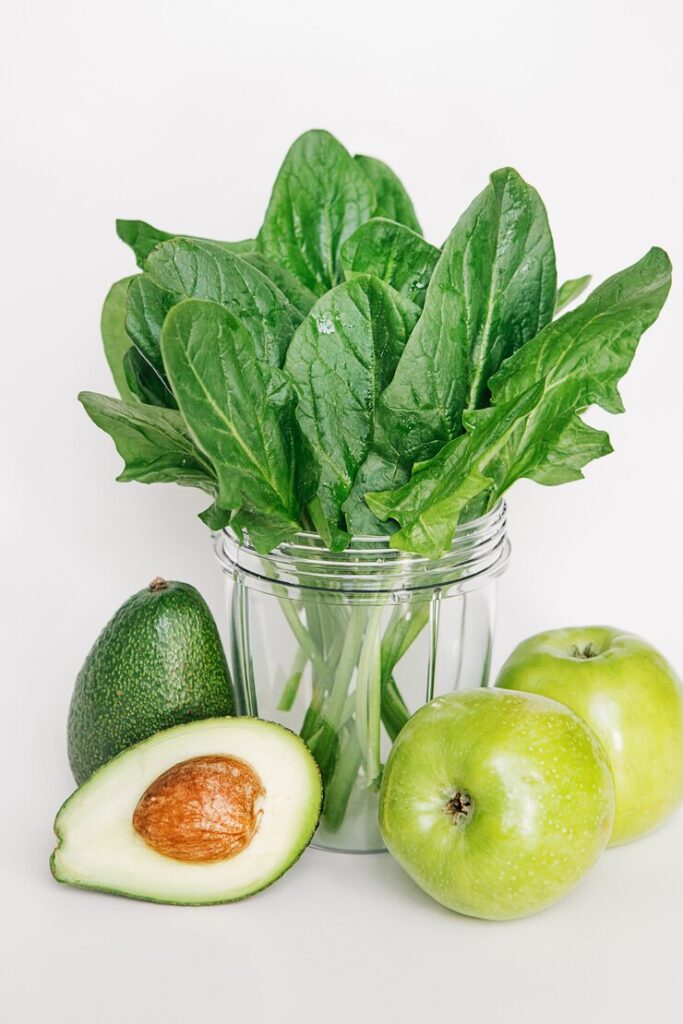Diabetes. The disease is familiar even to those who have never had it, or think they have never had it. Sometimes the disease is almost asymptomatic from childhood, and treatment is not required, other type manifests itself in adulthood. Often the tendency to diabetes makes itself felt in a stressful situation for the body, for example during pregnancy. During this period, it is necessary to think about the correct treatment. Based on the results of studies, 3-10% of pregnant girls face the formation of gestational diabetes during pregnancy.
There are a number of factors that cause the formation of the disease, the rules of conduct during the difficult disease, as well as ways to prevent it. Today in this article, we will talk about all of these so that your pregnancy goes smoothly, even with some of the complications that hsd can bring.

What is gestational diabetes mellitus
Before we get to the causes, effects, and ways to avoid complications, let’s define what gestational diabetes in pregnancy is. So, gestational diabetes mellitus in pregnancy occurs when the body is unable to produce and process insulin on its own. This leads to an increase in blood glucose levels, sometimes critical.
Pregnant women are at risk, even if they were perfectly healthy before conception. This has to do with the development of the baby. The more the baby grows, the more it needs the support of nutrients produced by placental hormones. These hormones ensure the baby’s normal development and deplete the woman’s body.
In addition to the fact of pregnancy itself, there may be additional triggers:
- Excess body weight formed in gestational diabetes mellitus is very difficult to leave after delivery, and affects the course of childbirth.
- Large weight gain during pregnancy.
- Age of the woman.
- If the baby born in the previous delivery weighed more than 4 kilograms.
- Risk of hereditary transmission of the disease.
- National origin. More often gestational diabetes during pregnancy affects girls of Asian, Indian, Hispanic and African-American origin.
However, it is worth remembering, even if you do not have a predisposition, and you are safe on all of the above points, you should be carefully examined during pregnancy, and report any changes to your doctor, because mbc classifies the disease as dangerous.

Symptoms of gestational diabetes in pregnant women
Determining hsd in pregnancy “by eye” is almost impossible. Gestational diabetes mellitus in pregnancy often goes without any symptoms, and it can only be diagnosed after a blood test. However, there are a number of factors to pay attention to:
- The first sign is excessive fatigue.
- In gestational diabetes during pregnancy, vision deteriorates.
- Urinary urges become more frequent.
- One of the frequent signs is a feeling of constant thirst.
- Dizziness and fainting may occur. This may be caused by pregnancy or diabetes.
Any symptom should be voiced to the doctor in charge of your pregnancy. He or she will prescribe a test that can surely confirm or disprove hsd in pregnancy.
The blood sugar test is performed with anhydrous glucose at 25 weeks tentatively. The result is normal and should not exceed 5.1 mmol/L. We want to clarify that blood tests for gestational diabetes in pregnancy are performed several times (at least two), even in groups not included in the risk factors. This is one of the factors why it is important to become registered at the hospital in the early weeks.

Nutritional rules for pregnant women with GAD
The most important thing a pregnant girl diagnosed with gestational diabetes mellitus should do – Establish her diet. If insulin production is disrupted, it is important to carefully monitor each meal, otherwise, the consequences will be felt not only by the mother-to-be, but also by the unborn baby.
Important: The correct diet can only be prescribed by a doctor. Below are general principles of diet, which do not take into account the individual characteristics of your body. So, with hsd in pregnancy is necessary:
- The first recommendation is to switch to a fractional diet. Every day you should have 3 full meals, and three snacks (including a light snack at bedtime). Food plays a crucial role.
- Stick to a 50:35:15 protein/fat/carbohydrate distribution. This is the simplest measure of nutritional quality. Use a table with b/g/y for each food for convenience.
- Drink 1.5-2 liters of pure non-carbonated water exclusively.
- When you have hsd, you need to give up easily digestible carbohydrates completely.
- Consume dairy products in moderation, and only in the afternoon.
- Give up sugar in the diet, both in pure and processed form. The same for gestational diabetes should be done with honey.
The diet can be quite strict. If you find it difficult to stick to it, you should diversify the menu with cooking methods, and very rarely indulge yourself with small portions of “goodies” (if the situation with gestational diabetes in pregnancy is not critical, and does not threaten your life or the life of the child).

Menu of the diet for GDM
A balanced diet should meet all the needs of the mother and baby, give the woman the strength to nurse the baby and ensure that blood sugar levels remain normal. The most suitable diet is a diet for the table number 9. It involves the use of a number of products that meet certain criteria, with the complete elimination of others. The list of what can be eaten with gestational diabetes includes:
- Vegetables in raw, boiled, baked and steamed form. No starchy vegetables or carrots. You can read the full table of allowed fruits and vegetables online.
- Sour berries and fruits and sweets should be strictly limited.
- Cereals. However, you should not use semolina.
- Natural cottage cheese and cheese.
- You can eat rye bread with hsd.
- Chicken, turkey, rabbit, beef, and chicken eggs.
- Mushrooms, legumes, greens.
- You can eat nuts in small quantities are useful for gestational diabetes.
Any processed foods, sugary foods, semi-finished products, sweet fruits and butter should be strictly limited, and better to exclude altogether, as recommended by the diet table. This recommendation will help reduce the risk of developing the disease. It is important that the article only helps you to find a vector of eating behavior, the best recommendations you can get from your doctor.

What are the dangers of gestational diabetes mellitus
Diabetes is a dangerous disease. It can cause a lot of trouble. To avoid the consequences, it is important to diagnose the presence of hsd in pregnancy in a timely manner, and to take measures to “level out” the situation. But, what are the dangers of gestational diabetes mellitus? Here are some consequences according to mbc:
- Increased body weight. This is not only bad for the health of the expectant mother, but also leads to complications during childbirth.
- Gestational diabetes mellitus can cause seizures.
- Increased pre-eclampsia, which can lead to the need for a cesarean section.
- Development of hsd after delivery.
- Obesity in the unborn baby.
- GHD in pregnancy leads to early aging of the placenta, which prevents the baby from carrying the baby normally.
- Delayed development of the baby.
- Lots of congestion.
- Premature birth.
- Traumatization of the baby and the woman in labor during delivery.
In severe cases, hsd can lead to irreparable consequences for the fetus. As you can see, the list of consequences is not small, and none of them is easy. In some cases, insulin therapy is necessary. That’s why it is important to come in time for a check-up with the doctor, to talk about all health problems (even if they seem insignificant to you), and most importantly – in a timely and correct manner to pass all the appointed tests.

Basic rules for the prevention of GAD
It is almost impossible to predict the formation of hsd. However, it is possible to take measures to prevent the development of GSD. If you have risk factors, or suspect the possibility of formation of hsd, it is worth adhering to the basic principles of prevention of hsd during pregnancy:
- Eat as much fresh fruit, vegetables, lean meat and fish, and other approved foods as possible. The diet for gestational diabetes should be balanced and rich in vitamins. Sticking to the prescribed diet, and eating only approved foods, you can achieve amazing results without drugs.
- Consume about 2,500 kilocalories per day. This is the daily norm for carrying a healthy baby. Remember that “dieting” does not mean “starving” at all. It should only have an impact on how you feel, but not on how hungry you feel.
- Moderate physical activity in gestational diabetes is a must. You just need to exercise. This can be exercises at home, swimming, yoga, aerobics for pregnant women, etc. It is important that the type of sport suits your status as an expectant mother. According to a study in 2021, there is a 29% reduction in the risk of hsd during pregnancy when you participate in sports. Isn’t that a criterion for choosing a prevention method.
Healthy eating, positive thinking and constant medical supervision, will help avoid the formation and development of a diagnosis of gestational diabetes in pregnancy. During this trepidation period, your health, and the health of your baby, is in your hands alone. If you do not go to the doctor in time, you may need insulin therapy.



Download the app and get 7 days free use
 eng
eng rus
rus deu
deu esp
esp fra
fra ita
ita por
por srp
srp tur
tur ukr
ukr



